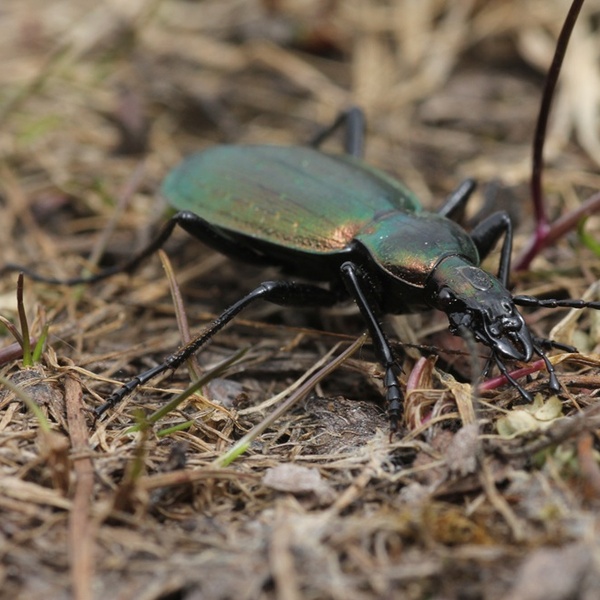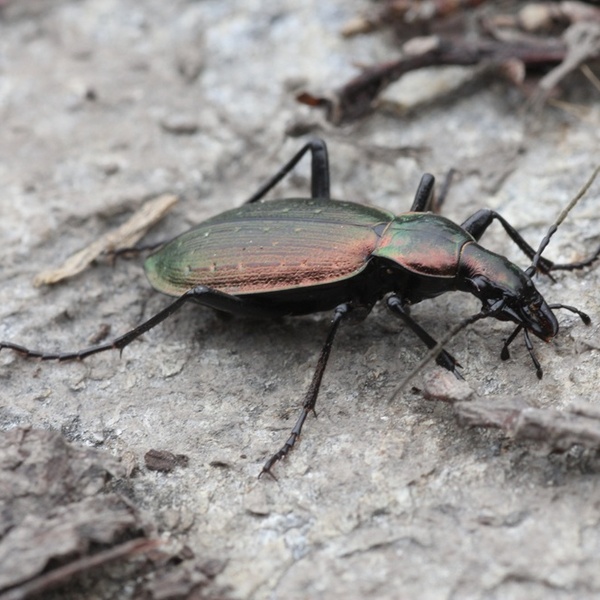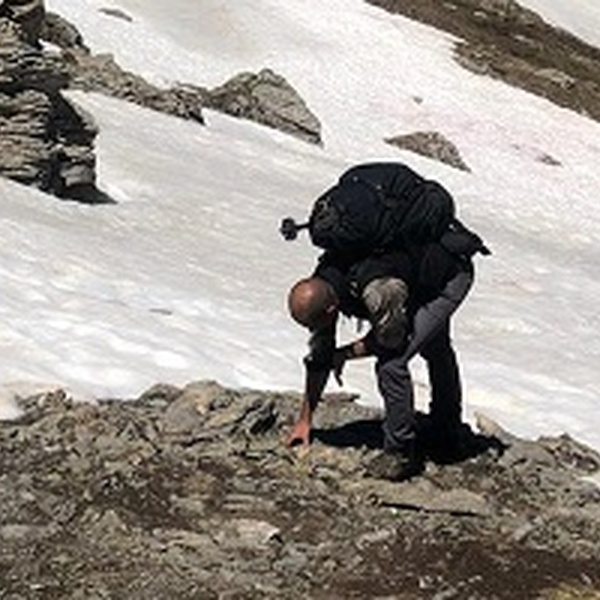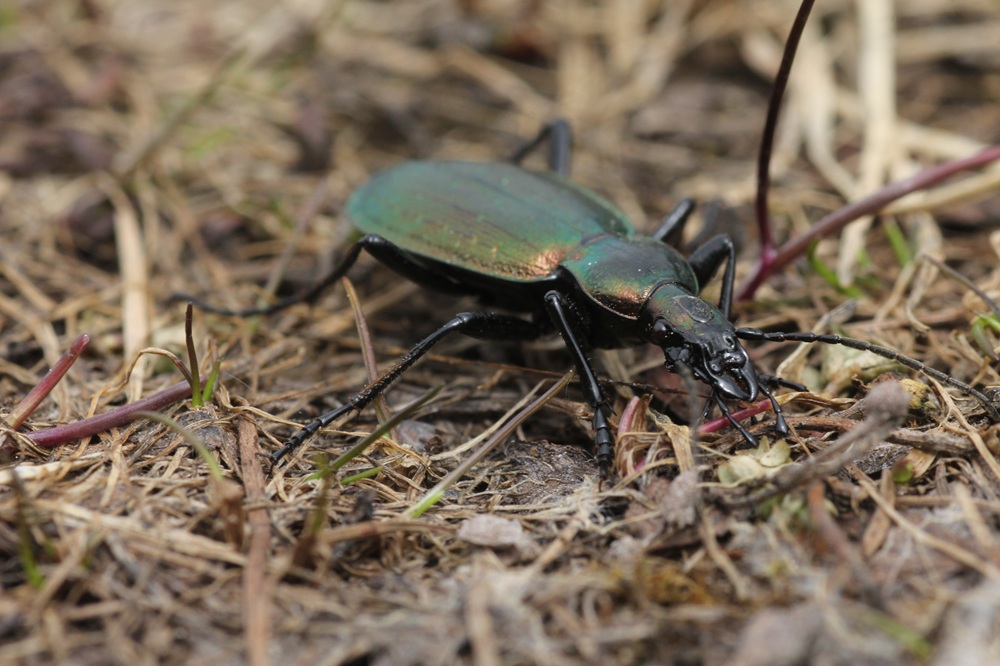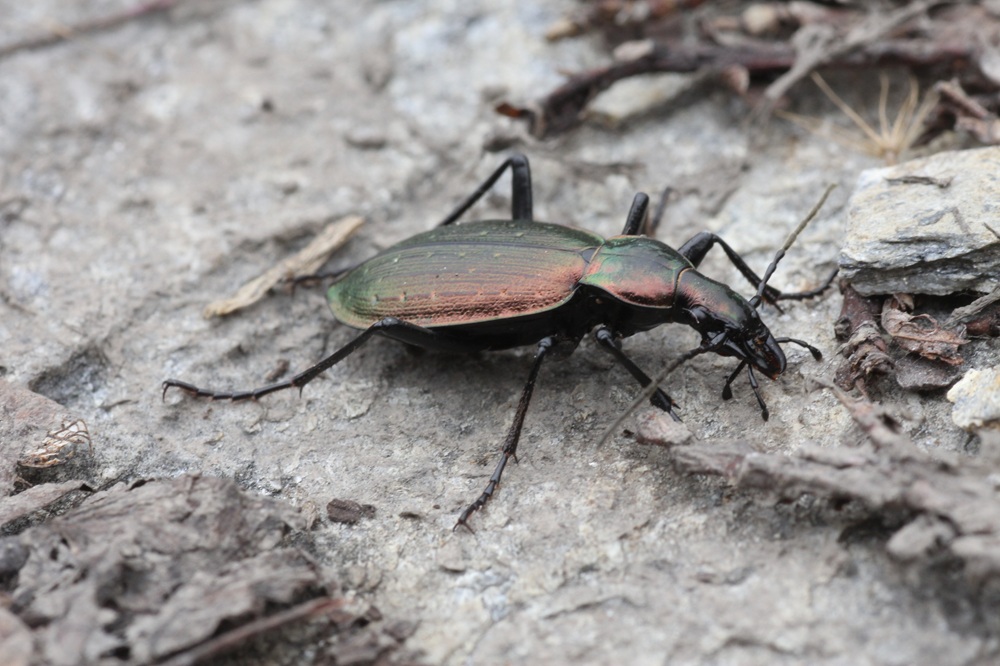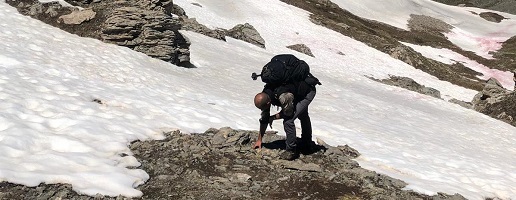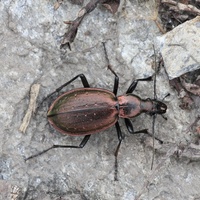
Carabus cychroides
the six-legged jewel of the Cottian Alps
Classification:
Habitat:
It is a beetle endemic to a few very limited areas of the Cozie Alps, mostly falling within our protected areas.
It is a steno-Mediterranean species: it has an extremely restricted, almost point-like distribution, with few populations made up of a small number of individuals.
Where can you find me?
Where can you find me?
ZSC Gran Bosco di Salbertrand
ZSC – ZPS Orsiera Rocciavrè
ZSC – ZPS Val Troncea
Classification:
Habitat:
It is a beetle endemic to a few very limited areas of the Cozie Alps, mostly falling within our protected areas.
It is a steno-Mediterranean species: it has an extremely restricted, almost point-like distribution, with few populations made up of a small number of individuals.
The rocky outcrops and debris between the Orsiera and Albergian conceal a gem with shiny green reflections and precious stitching. This is Carabus cychroides, probably the most iconic and elusive Carabidae beetle of the Cottian Alps.
This mysterious creature indeed has some characteristics that make it difficult to observe: first of all, it lives at altitudes between 2100 and 2800 meters where it hides in the narrowest cracks and crevices of the scree, aided by its peculiar, flattened, and short shape, with very expanded and almost round elytra. Here it hunts its preferred prey, the snail Chilostoma glaciale, after slipping into its shell and extracting it with its mandibles. Furthermore, it has a very early and short phenology, so adults can be found as early as late spring, when most of the ground is still covered in snow, and they remain active for just over two months.
Finally, it has an extremely restricted, almost point-like range, with few populations composed of a small number of individuals.
It is only present on some mountainous slopes of the Chisone, Susa, and Germanasca valleys, in a total area that does not exceed 250 km². 85% of its range is within protected areas managed by the Alpi Cozie Parks.
Along with Carabus planatus (Sicilian endemic) and Carabus olympiae (endemic to the Val Sessera- Biella, listed in Annexes II and IV of the Habitats Directive as a species of priority interest and classified as Vulnerable (VU) in the IUCN Red Lists), it is one of the 3 steno-endemic species found exclusively in Italian territory. This elevates Carabus cychroides to the rank of species of particular conservation interest.
There are so few Carabus cychroides that after the discovery of the first specimen in 1860 in the Albergian valley, described in 1864 by Count Flaminio Baudi di Selve, it took almost 40 years before Swiss entomologist Paul Born collected a second individual along the Val Susa - Val Chisone ridge, in the area now included in the Orsiera Rocciavrè Natural Park. In recent years, during studies conducted by passionate carabidologists, new, extremely limited occupied territories have been identified in the Val Troncea Natural Park during the Interreg Monviso project and through scientific studies that preceded the drafting of the Management Plan for the Special Conservation Area "Val Troncea." Within Project 2 COBIODIV of the PITEM (Integrated Thematic Plan) Biodiv’Alp further scientific investigations on this Carabidae have been promoted to gather data on its actual distribution, abundance, and ecology, also to identify, characterize, and neutralize the main threats to its conservation.
According to studies, its very small range is extremely fragmented and, according to climate projections, this will drastically reduce and further fragment it. Additionally, the rise of another species of the same genus (Carabus depressus) would expose it to a high risk of hybridization and competition for food resources with that species.
The Carabus cychroides is an emblem of a changing world and significant conservation challenges. Based on the worst greenhouse gas emission scenarios, the species will become extinct between 2050 and 2090. To prevent its extinction, it is necessary to reduce emissions and implement careful protection of the fragile habitats it prefers. Moreover, it must be defended from collectors.
As of March 27, 2025, it is included in the IUCN Red Lists as a Threatened (EN - Endangered) species at very high risk of extinction in the wild.
Insights:
The Carabus cychroides has been studied within the framework of the Pitem Biodiv'Alp
Piemonte Parchi: In the Cozie Alps, there is a beetle fleeing upwards
YouTube: Carabus cychroides, the six-legged jewel of the Cozie Alps
Scientific article: "COLLATERAL THREATS: FURTHER POSSIBLE EFFECTS OF WARMING ON THE ENDEMIC HIGH ALTITUDE BEETLE CARABUS CYCHROIDES" by Luca Anselmo and Barbara Rizzioli
Received: 14.02.2022. Revised: 20.04.2022. Accepted: 25.05.2022
You might also be interested in...
- emoji_nature Cortippo di Conca Cialancia
- emoji_nature Gravel bank
- emoji_nature Formica rufa
- emoji_nature Apollo
- campaign "What a bunch of flowers" and the protection of wild flora
- campaign Progetto zecche: resoconto attività 2024
- campaign Un articolo scientifico per il cortippo di greto
- campaign Biodiversity at risk: the Emys orbicularis
- campaign Al Colle di Tenda Festa Transfrontaliera della Biodiversità alpina
- campaign Two days of discussion on water resource management

 Fauna
Fauna
